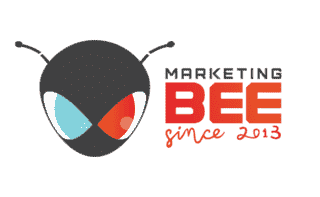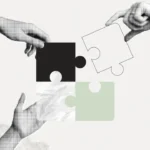Table of Contents
ToggleIf you’re running an advertising agency Chittagong businesses depend on for creative campaigns, learning from global success stories can give you a serious edge. A perfect example is the legendary Got Milk? campaign. Launched in 1993 by the California Milk Processor Board (CMPB) and developed by the well-known advertising agency Goodby, Silverstein & Partners this campaign became one of the most iconic and culturally embedded marketing efforts in history.
With its clever tagline and unforgettable milk moustache visuals, Got Milk? not only boosted milk sales across the U.S. but also redefined how emotional storytelling can work in advertising. In this blog, we’ll break down the campaign’s origins, the creative agency behind it, its overall impact, and the timeless lessons it offers to any advertising agency Chittagong marketers should take note of.
Whether you’re a new advertising agency in Chittagong or an established player, these insights can help you craft better, bolder, and more memorable campaigns.
Origins of the 'Got Milk?' Campaign
In the early 1990s, milk consumption in California was declining. The CMPB needed a fresh and impactful strategy to revive interest in milk. Enter Jeff Goodby and Rich Silverstein of the advertising agency Goodby, Silverstein & Partners. Their creative minds birthed the now-famous tagline, ‘Got Milk?’
The idea was rooted in the concept of deprivation. Instead of focusing on the benefits of milk, the campaign highlighted scenarios where the absence of milk would be sorely felt, such as with cookies or cereal. This approach was novel and immediately resonated with the public.
The Creative Execution
The campaign’s first commercial, titled “Aaron Burr,” was directed by none other than Michael Bay and became an instant classic. Created by Goodby, Silverstein & Partners, the ad portrayed a history enthusiast who, with a mouthful of peanut butter, couldn’t say “Aaron Burr” clearly enough to win a radio contest, all because he didn’t have a glass of milk nearby. The humor, timing, and relatability struck a chord with audiences, setting the quirky, memorable tone for the entire campaign.
Following its success, a series of similarly offbeat commercials continued the theme. These ads used dark humor, irony, and unexpected situations to highlight how frustrating life could be without milk. Rather than just promoting a product, Goodby, Silverstein & Partners crafted short, compelling stories that revolved around one relatable idea: missing milk at the wrong moment.
Celebrity Endorsements
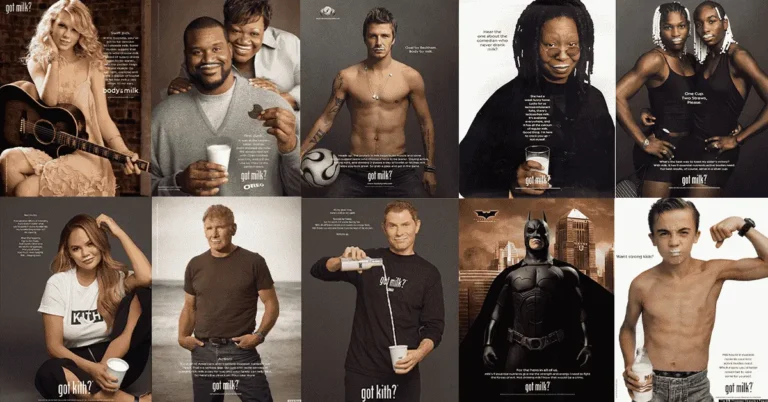
One of the most remarkable aspects of the “Got Milk?” campaign was its extensive use of celebrity endorsements. Over 70 commercials and 350 print ads featured a wide array of celebrities, from actors to athletes. Notable names included Harrison Ford, Britney Spears, and Naomi Campbell. These endorsements added star power to the campaign, making it even more memorable and widespread.
Financial Investment
The financial investment in the “Got Milk?” campaign was significant, with millions of dollars poured into advertising across various media. The initial years saw a substantial budget allocation, which facilitated widespread television commercials and print ads. This robust financial backing was crucial in ensuring the campaign’s omnipresence and effectiveness.
Impact and Legacy
The “Got Milk?” campaign had a profound impact on both the advertising world and consumer behavior. It won numerous industry awards and became a cultural phenomenon, with the tagline entering the American lexicon. At its peak, the campaign reached an estimated 80% of U.S. consumers daily.
Despite its success in terms of brand recognition and cultural impact, the campaign faced challenges in reversing declining milk consumption trends. This paradox highlights the complex dynamics between successful advertising and actual consumer behavior.
Modern Relevance
Even though the “Got Milk?” campaign officially ended in 2014, its influence persists. The strategies and creative approaches it pioneered continue to inspire modern advertising. The campaign demonstrated the power of simplicity, emotional engagement, and narrative storytelling in marketing.
Key Points of Success
Brand Awareness
The ‘Got Milk?’ campaign achieved unprecedented brand recognition. The tagline became synonymous with milk itself, transcending its initial target audience in California. Surveys and studies confirmed that even those who did not consume milk were familiar with the campaign. This widespread recognition is a testament to the campaign’s success in terms of visibility and memorability.
Cultural Impact
The campaign’s cultural impact is profound. The simplicity and versatility of the ‘Got Milk?’ slogan made it easy to parody and adapt across various media. From TV shows to internet memes, the phrase infiltrated popular culture. Celebrity endorsements played a significant role, with famous faces donning the iconic milk mustache in print ads, further embedding the campaign in public consciousness.
The ‘Got Milk?’ ads became a staple in magazines, television, and even school cafeterias. The campaign cleverly tapped into everyday scenarios and humor, making milk not just a beverage but a part of daily life. This cultural penetration ensured that the campaign remained relevant and talked about long after its initial launch.
Impact on Milk Consumption Trends

Initially, the ‘Got Milk?’ campaign succeeded in halting the decline in milk consumption in California. Reports and studies from the mid-1990s showed a temporary increase in milk sales, particularly among families and children. The campaign effectively communicated the importance of milk in a relatable and engaging manner.
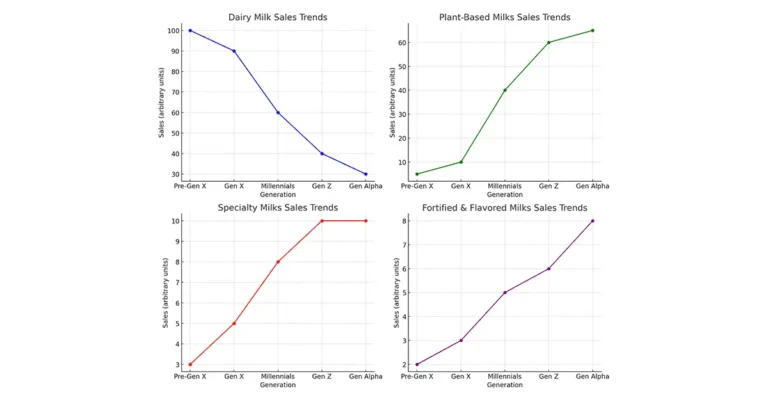
However, long-term trends in milk consumption present a more complex picture. Despite the campaign’s early success, milk consumption in the U.S. has generally continued to decline. Factors such as changing dietary habits, increased competition from alternative beverages (like plant-based milks), and health concerns related to dairy have all played a role.
Industry Response and Adoption

The success of the ‘Got Milk?’ campaign did not go unnoticed. The National Milk Processor Board adopted the campaign, extending its reach nationally. This broader adoption showcased the campaign’s effectiveness and its potential to be scaled beyond California.
The dairy industry recognized the ‘Got Milk?’ campaign as a crucial tool in promoting milk. It set a benchmark for marketing strategies, inspiring similar approaches in other sectors of the food and beverage industry. The campaign’s influence is evident in how companies now approach branding, focusing on creating memorable and culturally relevant messages.
Challenges and Limitations
Long-term Consumption Trends
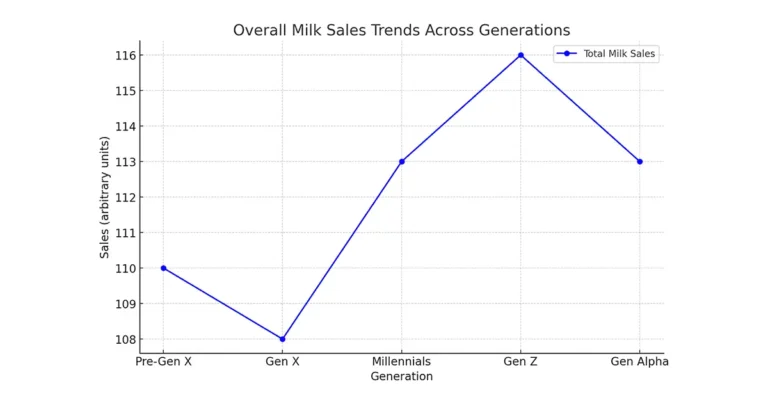
Despite the initial boost in sales, milk consumption in the U.S. has continued to decline over the long term. This decline is driven by several factors, including:
- Lactose Intolerance: An increasing awareness and diagnosis of lactose intolerance have led many consumers to seek alternatives to dairy milk.
- Health Trends: Modern dietary trends favor low-calorie and low-fat diets. Milk, particularly whole milk, is often perceived as high in calories and fat, which has impacted its consumption.
- Alternative Beverages: The rise of plant-based milk alternatives like almond, soy, and oat milk has provided consumers with more choices, further reducing the demand for traditional dairy milk.
Shifts in Marketing
The marketing landscape has evolved significantly since the launch of the ‘Got Milk?’ campaign. Traditional advertising methods, such as print and television ads, have become less dominant with the rise of digital media and social networks. This shift requires more integrated and multi-channel marketing approaches.
The ‘Got Milk?’ campaign, while highly effective in its time, highlights the challenges of adapting to new media environments. Modern campaigns must engage with consumers across various platforms, including social media, influencers, and interactive content.
Health Perceptions
Increasing awareness of dietary health has led some consumers to view milk less favorably. Concerns about lactose intolerance, the environmental impact of dairy farming, and the perceived health benefits of plant-based diets have all influenced public perception of milk.
Despite strong marketing efforts, these health perceptions have impacted overall milk consumption. The challenge lies in addressing these concerns while promoting the benefits of milk in a balanced and factual manner.
The Campaign's Legacy
The ‘Got Milk?’ campaign’s legacy extends far beyond its original intent. Launched in 1993, it set a global standard for emotional storytelling in product advertising. The tagline became a part of everyday language, and the campaign’s signature milk moustache visuals evolved into a pop culture phenomenon. It influenced how agencies approached minimalistic messaging, emotional appeal, and long-term brand consistency—lessons still cited in advertising classrooms and boardrooms around the world.
Why the Got Milk? Campaign Still Matters to Any Advertising Agency in Chittagong
The Got Milk? campaign isn’t just a creative success—it’s a strategic blueprint. For any advertising agency in Chittagong, learning from this globally recognized campaign can provide key insights into how to connect with local audiences in powerful, lasting ways. Below, we explore what makes Got Milk? relevant and how its core strategies can be adapted locally.
Why Got Milk? Matters to Advertising Agencies in Chittagong
Even though the Got Milk? campaign was developed for a Western market, its foundational principles can directly inspire advertising practices in Chittagong. Here’s why it matters:
Simplicity Sells: The campaign’s minimalistic two-word message proves that a simple idea, when well-executed, can have massive cultural and commercial impact. Agencies in Chittagong can benefit from stripping down their messaging to the core emotional hook.
Think Beyond the Product: Got Milk? wasn’t just about milk—it was about the inconvenience of not having it. Local agencies can shift focus from hard selling to emotional storytelling, highlighting the value or problem their client’s product solves.
Build a Visual Identity: The milk moustache became a visual cue for the entire campaign. In Chittagong’s competitive market, developing recognizable visuals or character-driven concepts can drastically improve brand recall.
Consistency is Key: Got Milk? maintained the same tagline for years, reinforcing brand memory. Local agencies should avoid frequent rebranding and instead build on consistent messaging that grows stronger over time.
Collaboration Matters: The success of Got Milk? was due to the synergy between the California Milk Processor Board and Goodby, Silverstein & Partners. Advertising agencies in Chittagong should foster deeper, idea-driven partnerships with their clients rather than transactional relationships.
Comparison with Other Iconic Campaigns
When compared to other iconic advertising campaigns, such as Nike’s ‘Just Do It’ or Apple’s ‘Think Different,’ ‘Got Milk?’ holds its own. Each of these campaigns shares common elements: a simple, powerful message, cultural relevance, and broad appeal.
Conclusion
In a competitive market like Chattogram, an advertising agency in Chittagong needs more than creative ideas, it needs culturally grounded, impactful strategies like those seen in the Got Milk? campaign. The ‘Got Milk?’ campaign was undeniably successful in building brand recognition and embedding itself in pop culture. While it fell short in reversing the long-term decline in milk consumption, a challenge driven by evolving dietary habits,it succeeded in keeping milk relevant in public discourse.
For advertising agencies in Chittagong, this campaign offers timeless lessons. From the power of a simple message to the strength of consistent branding and emotional storytelling, ‘Got Milk?’ shows that even the most ordinary products can be transformed through creative vision. It’s a reminder that effective marketing isn’t just about selling, it’s about shaping perception and building cultural resonance.
FAQ
In case you have more queries, look at the questions below.
Who created the 'Got Milk?' tagline?
The tagline was created by Jeff Goodby and Rich Silverstein of the advertising agency Goodby, Silverstein & Partners.
What was the main strategy behind the 'Got Milk?' campaign?
The campaign focused on the concept of deprivation, highlighting everyday situations where the absence of milk would be keenly felt.
How did the 'Got Milk?' campaign impact milk sales initially?
The campaign initially succeeded in halting the decline in milk consumption in California, with studies showing a temporary increase in milk sales.
Why has milk consumption continued to decline despite the campaign's success?
Long-term declines in milk consumption are influenced by factors such as lactose intolerance, changing dietary habits, health concerns, and the rise of alternative milk products.
What role did celebrity endorsements play in the campaign?
Celebrity endorsements, featuring famous faces with the iconic milk mustache, significantly contributed to the campaign's cultural impact and reach.
How much money was spent on the "Got Milk?" campaign?
The "Got Milk?" campaign saw a substantial financial investment over the years, running into millions of dollars. The initial phase alone had a significant budget to ensure widespread media coverage and high-impact advertising.
How many celebrities participated in the campaign, and can you name a few?
Over 70 celebrities participated in the "Got Milk?" campaign. Some notable names include Harrison Ford, Britney Spears, Naomi Campbell, and Sarah Michelle Gellar.
How has the marketing landscape changed since the 'Got Milk?' campaign?
The rise of digital media and social networks has shifted marketing strategies towards more integrated and multi-channel approaches, moving beyond traditional print and television ads.
What is the lasting legacy of the 'Got Milk?' campaign?
The 'Got Milk?' campaign remains a textbook example of effective advertising, known for its simplicity, cultural relevance, and memorable message. It continues to be recognized and referenced in popular culture.

